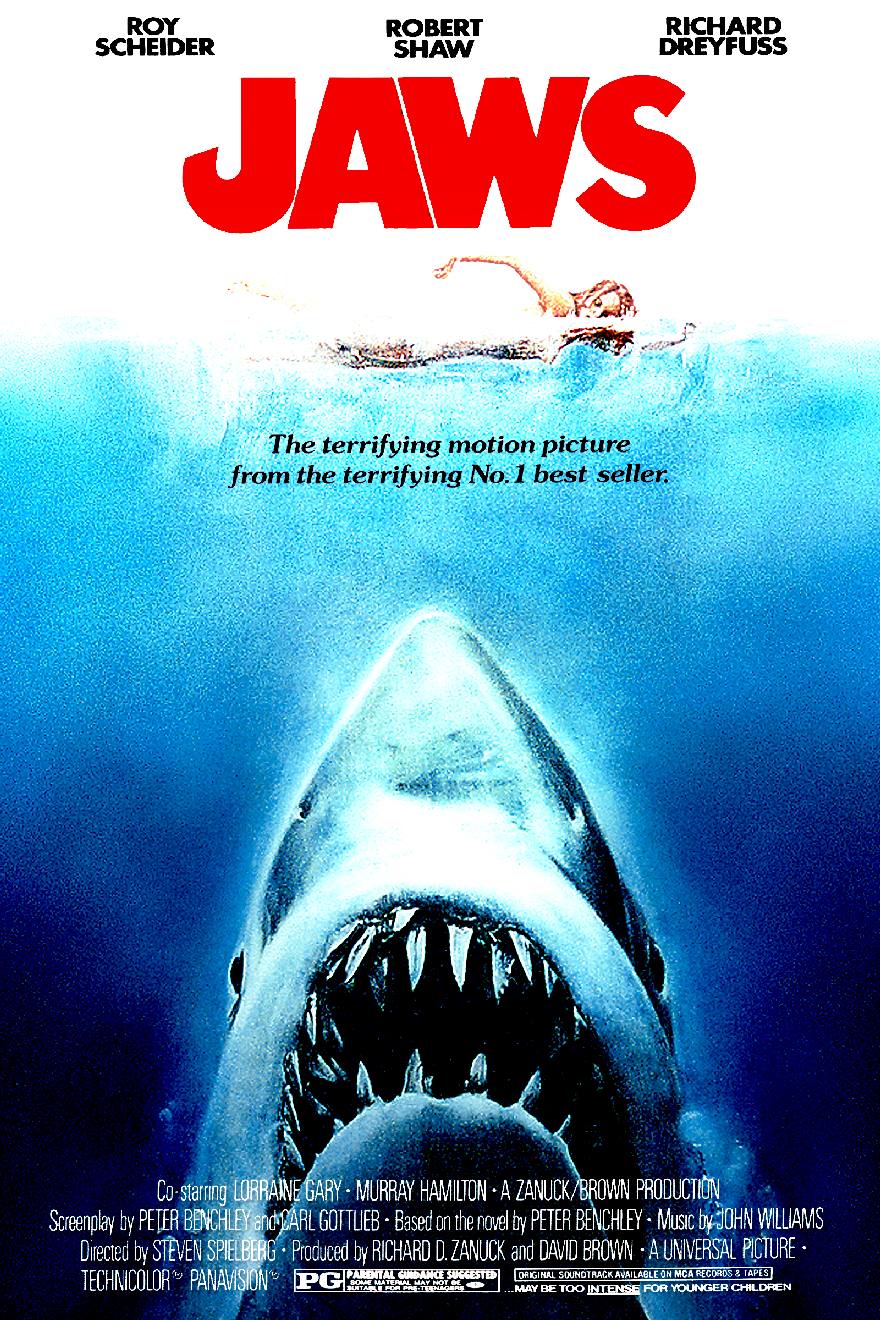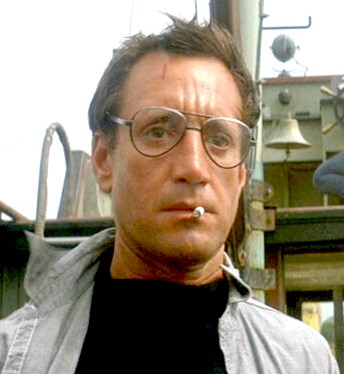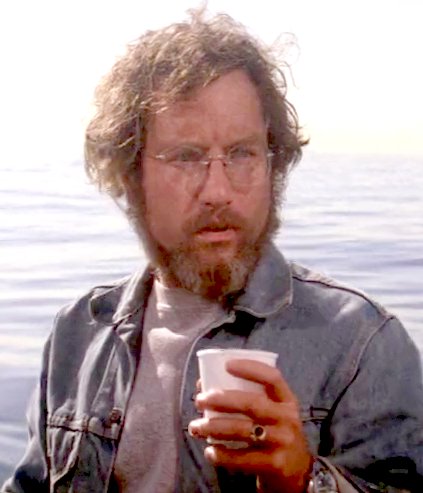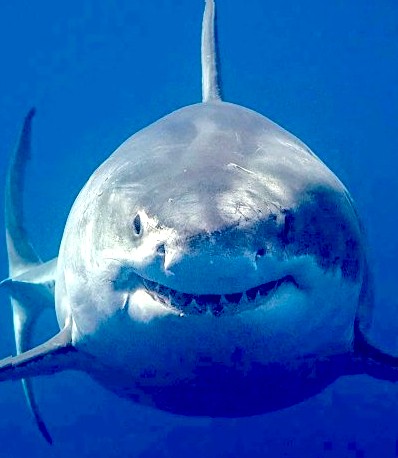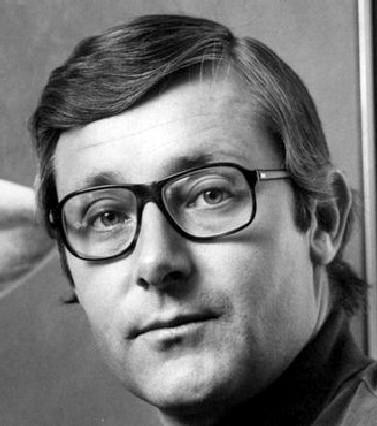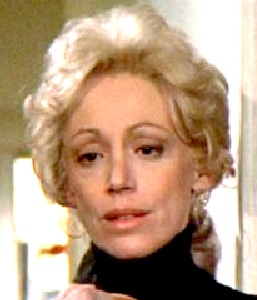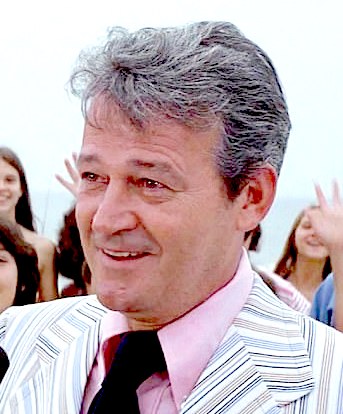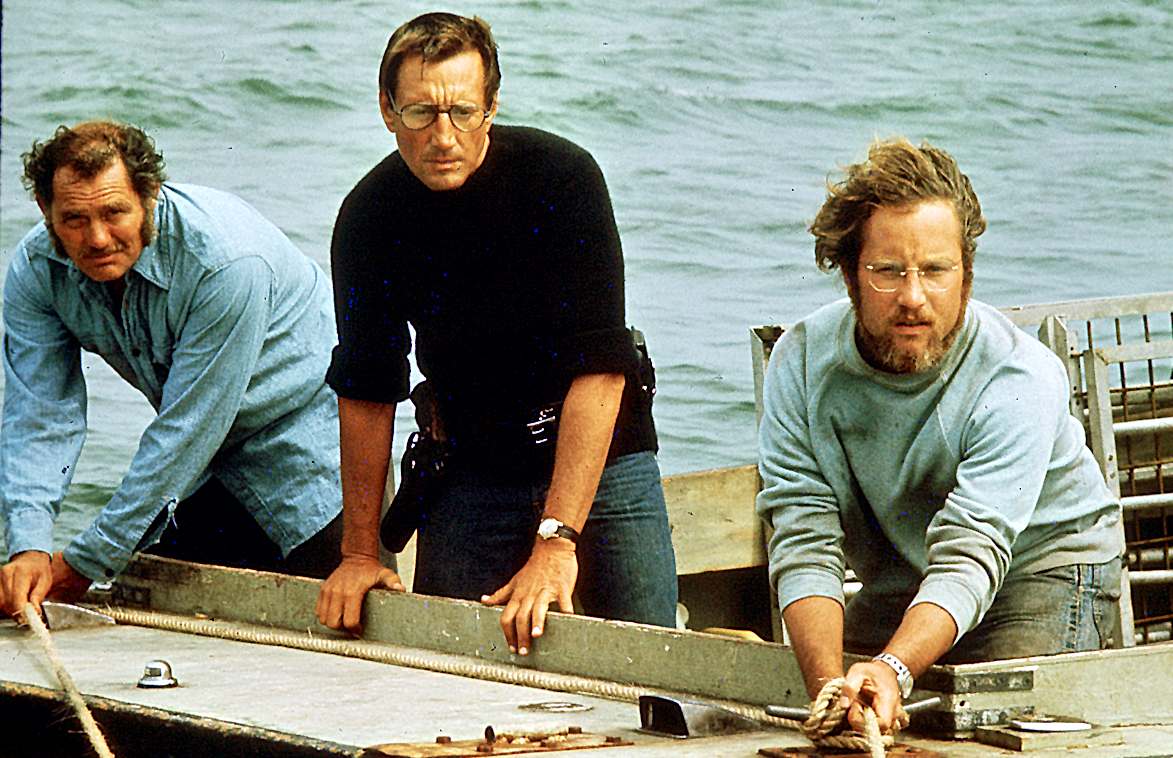|
SIGNATURE TUNE
|
|||||
|
POSTER ART - The developers spent around six months working on the poster art for Jaws, more time than it took Peter Benchley to dream up the plot. Steven Spielberg cut his teeth on the meaty role Jaws presented, directing a film using a giant rubber shark model, sometimes on submerged rails, that was camera shy. Oddly enough, having to resort to Alfred Hitchcock like suspense building, in not showing 'Bruce,' as the flawed animatronic became known, the lack of props actually helped to make the film a success.
|
|||||
|
|
|||||
|
|
|||||
|
|
|||||
|
|||||
|
|
|||||
|
|
|||||
MUSICAL
SCORE
Spielberg later said that without Williams's score the film would have been
only half as successful, and according to Williams it jumpstarted his
career. He had previously scored Spielberg's debut feature, The Sugarland
Express, and went on to collaborate with the director on almost all of his
films. The original soundtrack for Jaws was released by MCA Records on LP in
1975, and as a CD in 1992, including roughly a half hour of music that
Williams redid for the album. In 2000, two versions of the score were
released: Decca/Universal reissued the soundtrack album to coincide with the
release of the 25th-anniversary DVD, featuring the entire 51 minutes of the
original score, and Varèse Sarabande put out a re-recording of the score
performed by the Royal Scottish National Orchestra, conducted by Joel
McNeely.
|
|||||
|
In Kulo Luna, John Storm faces off four great white sharks, bravely challenging them to take a bite out of him, armed with only a speargun and a megaphone. But the oceanographer has something up his sleeve. In this story, the sharks feature only briefly, a humpback whale is the star.
|
|||||
|
Please use our A-Z INDEX to navigate this site or return HOME
This website is Copyright © 2021 Cleaner Ocean Foundation Ltd and Jameson Hunter Ltd Kulo Luna™ is a registered trade mark with international application(s) pending.
|
